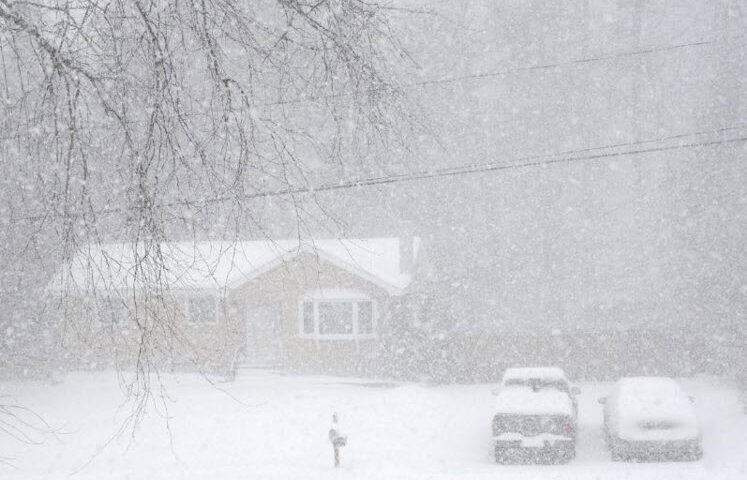Winter is here, and that means snow and lots of it. If you want to stay safe this snowy season, check out our guide to the property risks of blizzards.
We are no strangers to snow in the UP. With our winters ranging between 40 and 200 inches per year, it should be no surprise that we rank right behind Alaska on the list of states with the most snowfall in the U.S., so if anyone should be ready to face the property risks of blizzards, it should be us. Here are some things to look out for when the weather outside turns frightful.
Fallen Trees and Power Lines
Blizzard winds can reach upward of 35 mph, wreaking havoc on a home’s siding, lawn furniture, and the local electricity. One of the biggest dangers to your property during a blizzard is when the wind knocks down power lines and trees or when pieces of debris like branches fly across the lawn and into your home. While you can’t change where a tree or power line falls, you can take some precautions. For instance, if your tree’s branches are growing too close to your home, winter is the perfect time to prune them to keep them from damaging your walls or roof.
Collapsed Roofs
But fallen trees aren’t the only thing that can damage a roof. Although snow is light when you catch it on your tongue or toss it at your kids, those 40 to 200 inches we mentioned can become very, very heavy. For older or damaged roofs, this weight can spell disaster. Have a professional inspect your rooftop, when possible, before the snow begins for the season to make sure your roof is ready to meet the challenge. Water backing up in the gutters and then freezing can also play into roof damage, so clean out your gutters when you have your roof inspected.
Burst Pipes and Flooding
When temperatures drop below freezing, exposed pipes are prone to bursting, especially in older homes. And with blizzard conditions making it dangerous to travel, it’s a situation you will likely be stuck with until the snow clears up. Burst pipes can cause water damage to walls, ceilings, and any other possessions that may be nearby. Plus, in the days afterward, your home will be more prone to mold infestations. When you know a cold snap or blizzard is coming, make sure to turn on faucets to a low drip. Keeping the water moving will keep the pipes from freezing.
Car Damage
Blizzards make for treacherous road conditions, and in almost every case, it isn’t safe to drive in a blizzard. But your car can still sustain damage even sitting in your driveway. Windblown debris can strike the side of your car, denting the body and cracking the windows or windshield. These cracks are especially noteworthy because the rapidly dropping temperatures can cause the glass to contract, making the problem worse. If you want to protect your car this season, make sure you examine the windshield for cracks before the cold weather sets in. If possible, try to keep vehicles in a garage or barn.
- Laker Men’s Basketball Handle Kuyper 88-55 - December 23, 2024
- MYWAY Sault Bridge Brawl & NEMWA Regional Results - February 22, 2024
- Crawford County Prosecutor clears State Trooper in the fatal shooting of man earlier this month - February 23, 2023



